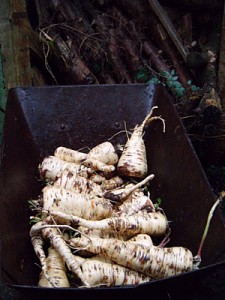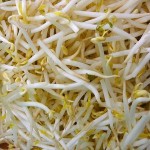
More evidence that low-calorie sweeteners are bad for your health
Studies show that artificial sweeteners can raise the risk of hypertension, metabolic syndrome, type 2 diabetes and heart disease, including stroke.

For thousands of years before refrigerators and packaged food, people across the world needed to make food last through the winter.
Starches present no problem; dried, grains like wheat and rice can last decades. Protein can also be made to last; beans can be similarly dried meat can be salted, pickled and smoked, and of course animals can be slaughtered during the dark months.
Vitamins, found in fresh plants and lasting only a short time in the body, present more of a challenge.
All these methods preserve food that was grown in earlier months, but you can also continue to grow fresh food though the winter months. One method is to grow sprouts – not Brussels sprouts, but beans or seeds that have been soaked in water and begun to germinate into seedlings, as they would in soil.
Sprouting might be the only kind of kitchen gardening that almost anyone can do, almost anywhere. Growing your own food sounds great for rural and suburban landowners, but presents problems for urban flat (apartment) dwellers, renters, lodgers, squatters and prisoners – and more of us might find ourselves in one of those categories in the tumultuous decades ahead.
Get sprouting
Sprouts, however, require no land, yard, garden, tools, infrastructure or practice.
You can grow them for almost no money – a 500g bag costs me 1.60 Euros, or about 40 cents per lunch. They grow in plastic bags, pottery, bowls or almost any other vessel.
The vessels can be placed on a shelf, in a desk drawer, under the couch, in the boot of your car, in a closet a hole in the ground or any other cool dark place. The crops come to fruition in a few days rather than a few months, and can be eaten with no cutting, peeling, cooking or preparation.
What I’m getting at here is, you have no excuse for not growing sprouts.
You can sprout the beans or seeds of most edible plants – I favour mung beans — but avoid any plants whose leaves would be toxic, like tomatoes or potatoes. The details of how to sprout will vary depending on what kind of seeds and containers you have, but the basic idea remains the same – keep the seeds wet until they are a good size to eat.
No special equipment needed
School-children are often told to let them lie on a wet paper towel, but I use plastic throwaway tubs from an Indian restaurant in a nearby town. The tubs have a sealable lid, and I poked two holes just below the lid on either end.

Bean sprouts can go soggy before they get a good, edible growth on them. Image – Brian Kaller
The holes are high enough that I can submerge the beans in water, yet allow the soaked beans to breathe – plants need to breathe just as we do, and an airtight container risks creating dead and moulding sprouts.
In my case, I rinse the beans first, and then let them sit in a tub of water for about 12 hours or so – it can be as little as three hours or as much as 24, but 12 seems to work best for mung beans.
Then drain the water and let the beans sit in the damp tub for the next few days, rinsing them at least once a day and preferably twice – the beans need to be kept moist but not swimming in standing water.
Every evening when I come home from work – and every morning when I have time before catching the bus – I fill the tubs with water, turn them on their sides, and let them drain. If you forget for a day or two the beans will probably recover, but tend to start growing roots, making them tougher and less tasty.
Go for variety
In addition to mung beans I recommend lentils, although they grow a day or two more slowly and I find them less tasty. I occasionally sprout the seeds of fenugreek, broccoli, alfalfa, or clover, but generally find them too expensive in this country for the small amount of sprouts they yield, and they run a higher risk of moulding before fully sprouting.
I found larger beans a problem – Adzuki beans were even slower and less tasty than lentils, and soybeans – the common sprout of Chinese stir-fry – has a tendency to decompose before there is enough living sprout to make it worth my while.
We in the modern West have grown up surrounded by mountains of food – grown, picked, processed, preserved, cooked and refrigerated for us, and in such quantities that a third of it is through away uneaten, and obesity presents a major health crisis.
Fossil fuels made this brief state possible, and now that we see their end on the horizon we must reacquaint ourselves with the more basic methods of getting nutrition – ideally allowing more of us, not just to survive, but to eat well.

Please subscribe me to your newsletter mailing list. I have read the
privacy statement